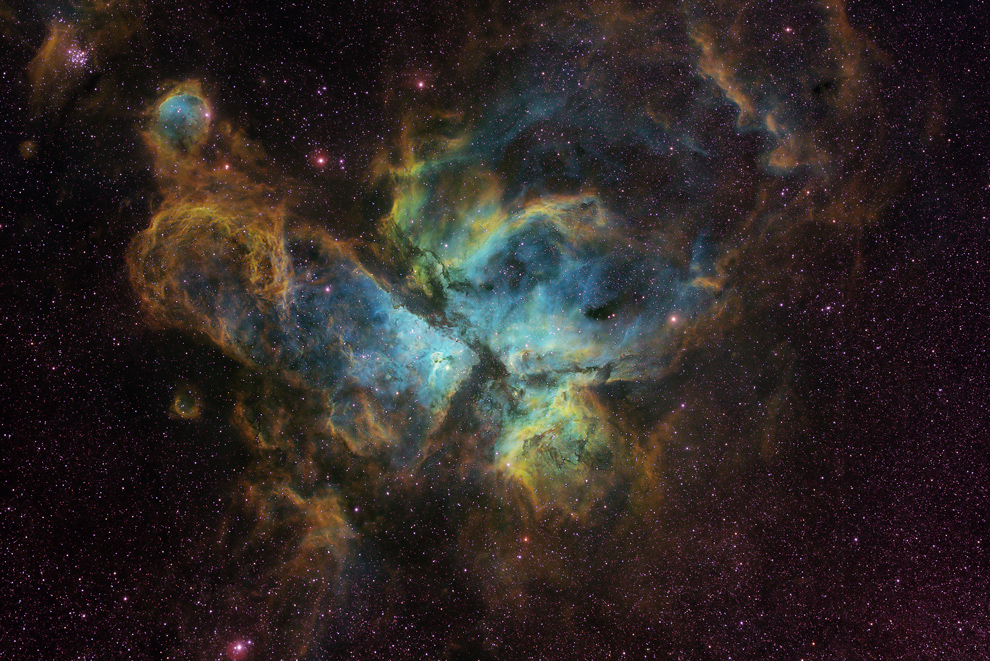
Carina Nebula: The Carina Nebula is a huge, bright diffuse nebula in the constellation Carina, and one of the largest star-forming regions in our galaxy. It is about 8,000 light years from us, and over 300 light years across. The bright star just left of center is the variable star Eta Carinae, an extremely hot and large star, with a mass of at least 100 times that of our Sun (making it one of the most massive stars in our galaxy), surrounded by the Homunculus Nebula (the small, bright bubble; this nebula is made up of matter ejected from the unstable star in 1843). Also in the field is the bright open star cluster NGC3293 (in th eupper left corner), associated with the large hydrogen cloud dominating the picture. Also in the field is the dark nebula called the "Keyhole Nebula," the dark filaments occluding some of the Homunculus Nebula; the Keyhole Nebula is much closer to us than the Carina Nebula. There are a number of other bright, young star clusters associated with the Nebula. The field is presented here in two versions, a false-color version using the "Hubble palette," and a more standard version (click on the image to toggle between the two versions, waiting long enough for large files to download). As explained on the Hubble site, "The final image depicts red light from hydrogen atoms as green, red light from sulfur ions (sulfur atoms with one electron removed) as red, and green light from doubly-ionized oxygen (oxygen atoms with two electrons missing) as blue. These color reassignments enhance the level of detail visible in the image, because otherwise the red light from hydrogen and that from sulfur would be hard to tell apart. In the final [Hubble palette] image, the blue-green haze indicates light from hydrogen and oxygen."
Copyright 2011, 2013 Mark de Regt